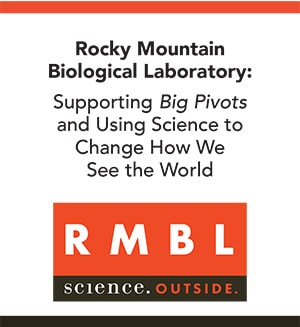What a wallop it has during its 9-year life
Scientists last year observed a record annual increase in atmospheric levels of methane, the largest since systematic measurements began in 1983, reports the National Oceanic and Atmospheric Administration.
Measurements of carbon dioxide go back much longer, to the 1950s at Mauna Loa, but the story is the same. The C02 accumulations increased 2.3 parts per million in 2021 compared to the previous year. It was the 10th consecutive year for increases of more than 2 parts per million. That’s the fastest sustained rate of increase in the 63 years since monitoring began.
CO2 emissions stood at 414 ppm last year, compared to 358 when measurements began at Mauna Loa and 280 ppm before the start of the industrial era.
The last time they were this high, around 43 million years ago, sea level was about 75 feet higher than today, the average temperature was 7 degrees F higher, and large forests occupied areas of the Arctic that are now tundra.
Carbon dioxide dissipates slowly, over thousands of years.
“About 40% of the Ford Model T emissions from 1911 are still in the air today,” said Pieter Tans, senior scientist with the Global Monitoring Laboratory. “We’re halfway to doubling the abundance of carbon dioxide that was in the atmosphere at the start of the Industrial Revolution.
Methane lingers in the atmosphere only 9 years, but during that relatively brief time it has vastly more heat-trapping properties than carbon dioxide.
Atmospheric methane comes from many sources, including fossil fuel extraction, from the decay of organic matter in wetlands, and as a byproduct of digestion by ruminant animals, including cows.
In Boulder, the Institute of Arctic and Alpine Research at the University of Colorado has conducted research that indicates biological sources of methane such as wetlands or ruminant agriculture are a primary driver of post-2006 increases in methane. What this means, say NOAA scientists, is that a feedback loop may be occurring. In other words, more warming begets more methane, in this case more rain over wetlands in the Tropics that would largely be beyond the ability of humans to control.
Determining which specific sources are responsible for variations in annual increases of methane is complex, says NOAA, but scientists estimate that fossil fuel production and use contributes roughly 30% of the total methane emissions.
Scientists from the International Panel on Climate Change issued another warning in early April of the need to immediately slash emissions to keep temperature rise below 2.7 degrees F. That report also cited three actions—reducing the destruction of forests and other ecosystems, restoring them, and improving the management of working lands, such as farms—as among the top five most effective strategies for mitigating carbon emissions by 2030.
Why support Big Pivots?
You need and value solid climate change reporting, and also the energy & water transitions in Colorado. Because you know that strong research underlies solid journalism, and research times take.
Plus, you want to help small media, and Big Pivots is a 501(c)3 non-profit.
Big grants would be great, but they’re rare for small media. To survive, Big Pivots needs your support. Think about how big pivots occur. They start at the grassroots. That’s why you should support Big Pivots. Because Big Pivots has influence in Colorado, and Colorado matters in the national conversation.
- A big charge for Colorado’sEVnetwork - April 13, 2024
- United Power to get solar from near Pawnee - April 10, 2024
- Today’s shift to EVs and a long-ago motorcycle ride - April 10, 2024





